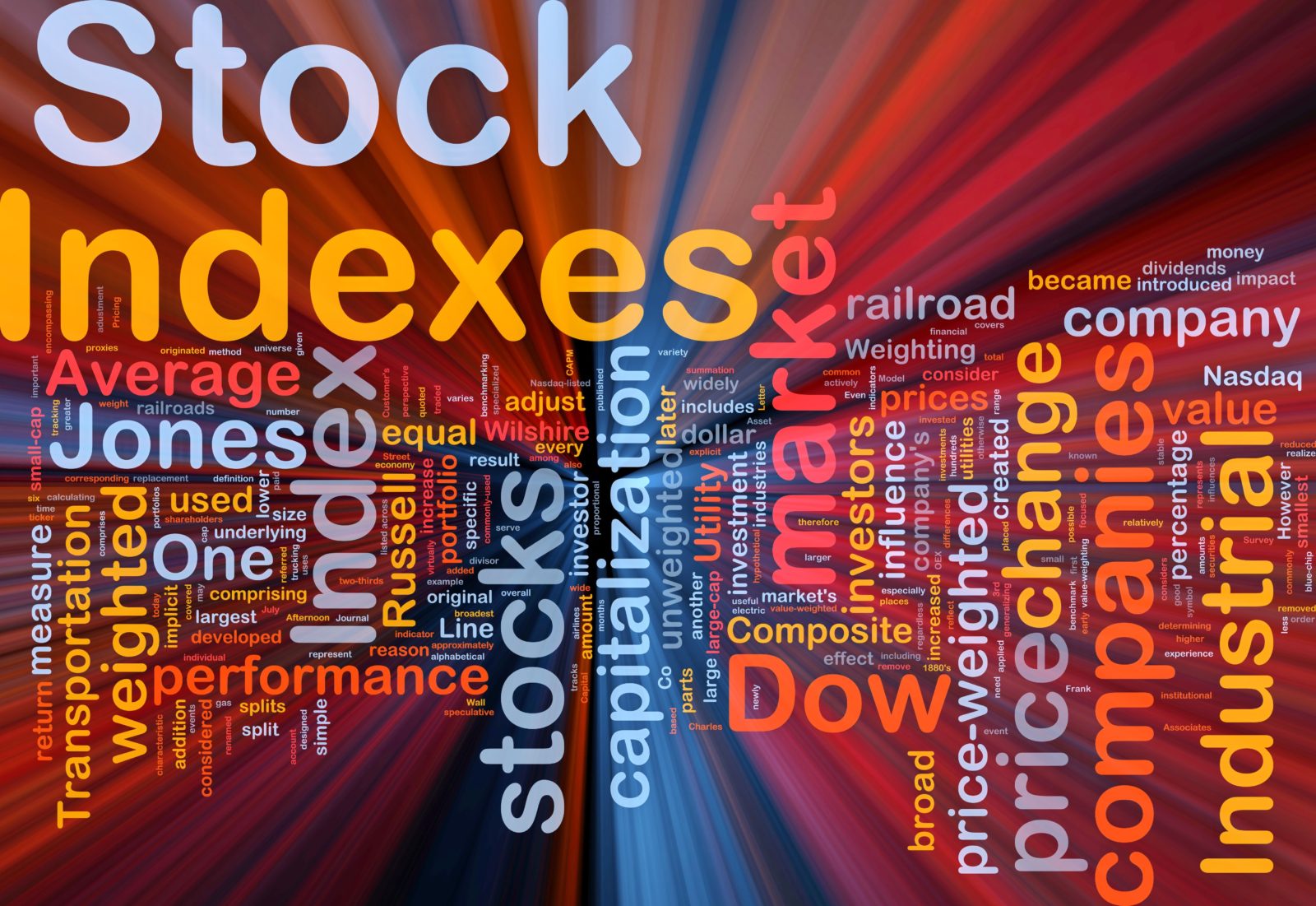“How did the market do today?” A typical question among investors, and it’s answered by referencing one of the major stock indexes. The news regularly refences the Dow Jones Industrial Average, the S&P 500, and the Nasdaq. But what exactly are these indexes? What is the difference between them? And what does it mean when you hear reports like “the Dow hit an all-time high today?”
There are over 5,000 companies that trade on the two major stock exchanges in the U.S.: the New York Stock Exchange and the Nasdaq. The companies that trade on these exchanges are from all types of industries. Some companies are well established and have been around for decades, and some are in their early stages. With such a wide variety of stocks, there needs to be a way to gauge how the stock market and certain sectors within it are performing.
A stock index is way to measure the value and performance of a portion of the stock market. A stock index takes a sample of stocks that either represent the overall stock market or a specific sector or class within it.
The Major Stock Indexes
The Dow Jones Industrial Average (DJIA) is the most familiar stock index and is often referred to simply as “the Dow.” It was created by Charles Dow in 1896, making it the second oldest stock index. At first, the Dow had 12 stocks, but today it consists of 30. It includes the largest and most well known publicly traded companies — often referred to as blue-chip stocks. Familiar names such as Apple, Johnson & Johnson, Chevron, IBM, and McDonalds are a part of the Dow.
The Dow Jones index is maintained by the S&P Dow Jones Indices. They decide what stocks are to be included. The index is calculated using a price-weighted system. This means the larger stocks have a greater effect on the index as opposed the index simply reflecting the average price of all 30 stocks.
As popular as it is, the Dow Jones Industrial Average has its weakness. Since it only consists of 30 companies, some feel it is not the best indicator of the overall stock market.
The Standard & Poor’s 500 Index — or S&P 500 — is comprised of 500 large companies from across all industries. It was created in 1957 by Standard and Poor’s, and like the Dow Jones, it is currently maintained by the S&P Dow Jones Indices.
The S&P 500 is not based on stock prices but the market capitalization, or value, of the companies. Because it includes 500 stocks from diversified industries, it’s considered by many to be the best measure of the overall U.S stock market. However, because the S&P 500 is comprised solely of large companies it is not considered a good measure for small companies that trade in the U.S.
The Nasdaq Composite Index includes all stocks that trade on the Nasdaq Stock Exchange. Since the Nasdaq is home to many technology, internet, and biotech stocks, this index is considered by many to be a good measure of growth and small-cap stocks.
The indexes discussed above are not the only ones. There are countless indexes created for specific industries, regions, and classes of stocks. For example, the Nasdaq-100 is comprised of 100 of the largest non-financial companies trade on Nasdaq. The Russell 2000 is an index of small cap stocks. Foreign indexes include the FTSE 100 (comprised of 100 of the largest stocks trading on the London Stock Exchange), the Nikkei (comprised of 225 large companies trading on the Tokyo Stock exchange), and the Hang Seng (comprised of 40 large companies trading on the Hong Kong Exchange). Indexes are not only for stocks; there are also indexes for bonds, commodities, real estate, and other asset classes.
Using an Index as a Benchmark
How is your investment portfolio doing? Did your mutual fund beat the market? Indexes are a useful tool to answer these questions about the performance of your investments.
To see how your mutual fund is doing, compare it to the most appropriate index. I must stress that you should use the most appropriate index. If your mutual fund is invested in foreign stocks, comparing it to the Dow Jones Industrial Average or the S&P 500 does not make sense. The right foreign index would be appropriate. If you’re invested primarily in technology companies, the Nasdaq would be the way to go. Look at your mutual fund’s prospectus. It will identify the correct benchmark.
Investing in Index Funds
Trying to beat the market consistently over time is extremely difficult. Most mutual funds do not.
So why not just invest in the whole market?
It’s easy. There are mutual funds and exchange-traded funds (ETFs) where the objective is to have the investment portfolio mirror a specific index. These are known as index funds. If you want to own the S&P 500, you can buy an index fund that holds the entire S&P 500.
The advantage of investing in an index fund is you never have to worry if your investment is outperforming or underperforming the market. You are invested in the market. Also, index funds tend to be less expensive compared to other mutual funds. Mutual funds have expense ratios that impact the rate of return. The expenses are based on the cost of managing the fund. Index funds are passive investments with minimal trading, so the cost to manage the fund can be significantly less.
Sign up for my newsletter to receive future articles

